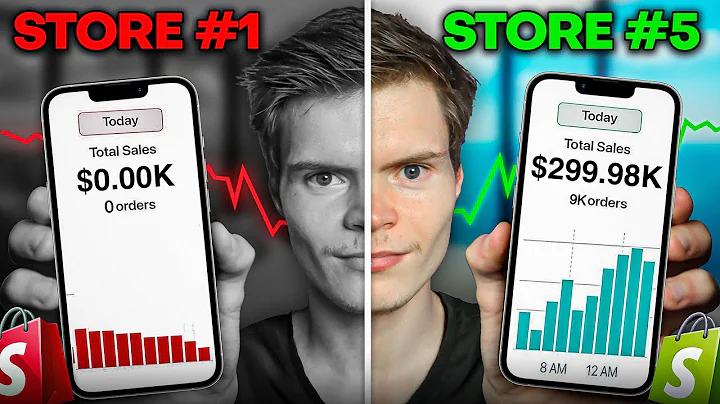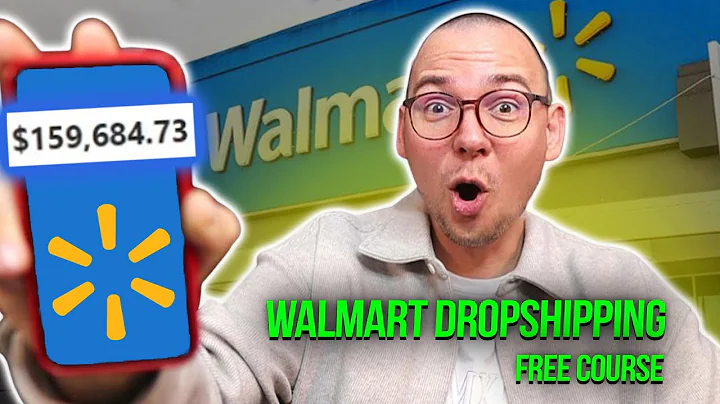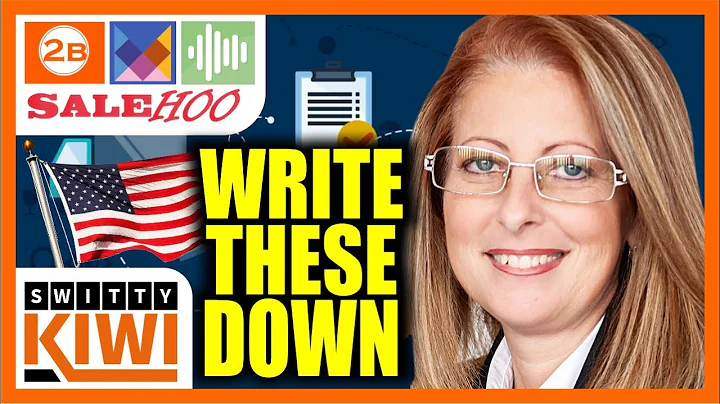Launching a Profitable Store with Sunglasses
Table of Contents
- Introduction
- Lessons from Previous Stores
- Choosing Sunglasses as the Product
- Determining the Product Selection
- Building Different Collections
- Getting Feedback on Products
- Building Trust with Suppliers
- The Evolution of Facebook Advertising
- Starting with Facebook Ads
- Facebook Ad Funnel
- Targeting and Segmentation on Facebook
- Using Instagram as a Marketing Channel
- Utilizing Email Marketing
- The Power of Giveaways
- Other Essential Tools for Ecommerce
- Future Marketing Channels
- Diversifying Product Offerings
- Juggling a Full-Time Job and Ecommerce
- Conclusion
Launching Your Own Store: The Do's and Don'ts
Introduction
Launching your own online store can be an exciting endeavor, but it's important to approach it with the right strategies in order to succeed. In this article, we will discuss the do's and don'ts of launching your own store, based on the experiences and insights of long-time store owner and Oberlo user, Tim Kock. Tim will share his lessons learned from previous stores, the reasoning behind choosing sunglasses as a product, strategies for product selection and building collections, the evolution of Facebook advertising, and much more. Whether you're a new entrepreneur or a seasoned store owner, this article will provide valuable insights to help you navigate the challenges of launching your own store.
Lessons from Previous Stores
Tim Kock has had multiple dropshipping stores in the past, and he has learned some important lessons along the way. One of the most important lessons he has taken into his newest store is to not overthink the process. Many new dropshippers tend to make the mistake of overthinking and over-researching, which can lead to analysis paralysis and hinder success. Tim advises new store owners to trust their intuition and take action rather than spending excessive time on research.
Choosing Sunglasses as the Product
When starting his most recent store, Tim decided to focus on selling sunglasses. The decision was based on the timing of the season and the intuition that people would be in need of sunglasses as summer approached. Tim wanted to create a sustainable business, so he chose a product that would have continued demand even after summer ended. This decision proved to be successful, as sunglasses are a popular accessory worldwide, and there is always a market for them.
Determining the Product Selection
Once Tim decided on sunglasses as the product, he needed to determine the specific products and suppliers to work with. To find inspiration and trends, Tim subscribed to influencers on Instagram who promote various products. By observing what these influencers were promoting, he gained insights into popular and trendy sunglasses styles. Additionally, Tim relied on his intuition and personal judgment to select the products he believed would resonate with his target audience.
Building Different Collections
Tim started his store with a collection of around 30 female eyewear products. This selection was primarily based on intuition, as he wanted to get started quickly without overthinking the process. He focused on female eyewear because he observed that most of the influencers he followed on Instagram were female and he wanted to target the same audience. This initial collection served as a starting point, and Tim planned to expand and diversify the store's offerings based on customer feedback and demands.
Getting Feedback on Products
Before finalizing his store's product selection, Tim sought feedback from his girlfriend. He showed her the products and asked for her opinion on whether she would wear them in public. This input helped him make better-informed decisions and ensured that the products would appeal to his target audience. Tim also mentioned that he had sought feedback from friends and family in the past to gain insights into their preferences and perspectives.
Building Trust with Suppliers
When choosing suppliers for his products, Tim focused on two key factors: packaging quality and the availability of ePacket shipping. He personally ordered products from his selected suppliers to conduct quality checks, ensuring that the products met his standards. By taking this hands-on approach, Tim built trust in the reliability and quality of his suppliers. He also emphasized the importance of ePacket shipping, as it offers fast and affordable delivery from China to the United States, Canada, and other countries.
The Evolution of Facebook Advertising
As someone experienced in running Facebook ads, Tim discussed the evolution of the Facebook ad platform. While it has become more competitive over the years, the advancements in the ad platform and ad manager have made it easier to create successful ads if you understand how to navigate and leverage its features effectively. Although Facebook ads require effort and experimentation, Tim emphasized the importance of continuous learning and adapting to the changes in the platform.
Starting with Facebook Ads
For Tim, Facebook ads were the main marketing channel for driving traffic to his store. He emphasized that the first ads should be aimed at generating content views rather than focusing solely on conversions or sales. By doing so, he gained valuable data and insights about his target audience, the effectiveness of his copywriting, and which ads and products resonated the most with his potential customers. Collecting this data allowed him to optimize and refine his future ads to attract and convert more visitors into customers.
Facebook Ad Funnel
Tim implemented a three-step ad funnel strategy on Facebook. The first ad aimed to generate content views, the second ad targeted engagement with the products, and the third ad focused on driving purchases. This funnel allowed Tim to build awareness and interest among potential customers before presenting them with a compelling offer to convert them into paying customers. By guiding potential customers through this funnel, Tim achieved more effective and efficient results in his Facebook ad campaigns.
Targeting and Segmentation on Facebook
In terms of targeting and segmentation on Facebook, Tim initially kept it simple. He focused on attracting and engaging his target audience and didn't overcomplicate the process with excessive targeting options. His primary goal was to find and attract potential customers and turn them into engaged visitors. Tim also emphasized the importance of testing and iterating on targeting, copywriting, and creative elements to identify what works best for his specific audience and products.
Using Instagram as a Marketing Channel
Even though Tim primarily focused on Facebook ads, he acknowledged the potential of other marketing channels, particularly Instagram. While he personally didn't find as much success with Instagram in the past, he recognized that his target audience uses the platform extensively. Therefore, he recommended that store owners with a similar target audience should leverage Instagram to reach and engage potential customers. By combining Facebook ads with Instagram marketing, store owners can maximize their brand exposure and attract a wider audience.
Utilizing Email Marketing
Although Tim didn't have ample time to leverage his email list during the one-month period of his case study, he acknowledged the effectiveness of email marketing. He suggested that store owners should take advantage of email marketing to nurture leads, build trust, and drive repeat purchases. By capturing email addresses through various strategies such as giveaways and pop-ups, store owners can establish direct and personalized communication with their audience, ultimately leading to increased sales and customer loyalty.
The Power of Giveaways
Tim highlighted the effectiveness of using giveaways as a lead capture strategy. In his case, he gave away a makeup brush set to capture cheap leads and increase brand exposure. The giveaway was promoted through his store's Instagram page and website pop-ups. By encouraging participants to share the giveaway and refer friends to gain extra entries, Tim was able to generate over 550 leads at a cost of around $0.26 per lead. Giveaways can be an excellent way to attract attention, build an email list, and create buzz around a store or specific products.
Other Essential Tools for Ecommerce
In addition to the Oberlo app, which played a vital role in Tim's store, he mentioned two other tools that were crucial for his success. KingSumo, a giveaway tool, helped him set up and manage the giveaway campaign, enabling him to capture leads effectively. Constant Contact, an email marketing platform, allowed Tim to streamline his email marketing efforts and leverage his email list for future promotions and sales. Store owners should explore and utilize various tools and apps to optimize their store's operations and marketing campaigns.
Future Marketing Channels
Looking ahead, Tim identified several untapped marketing channels that he believes can drive further growth for his store. He mentioned Instagram, Pinterest, and Snapchat as channels his target audience actively uses, making them viable platforms for expanding brand visibility and reaching new customers. By diversifying marketing efforts across multiple channels, store owners can capture a broader audience and increase their chances of success.
Diversifying Product Offerings
While Tim focused primarily on sunglasses, he acknowledged the potential benefits of diversifying the store's product offerings. By adding related products such as beach headwear or swimwear, store owners can cater to a wider range of customer preferences and potentially increase average order values. Tim suggested using the versatility and flexibility of dropshipping to test new product categories without significant upfront costs. This experimentation can help store owners discover which product combinations resonate the most with their audience.
Juggling a Full-Time Job and Ecommerce
As someone who balanced running a store with a full-time job, Tim offered advice on managing dual responsibilities. He emphasized the importance of time management and dedication. Tim would wake up early in the morning, usually at 4:00 a.m., to allocate focused time to his business before attending to his job responsibilities. By prioritizing tasks and diligently working on the store during his free time, he was able to make progress and achieve success despite limited hours.
Conclusion
Launching your own online store requires careful planning, effective strategies, and consistent effort. By learning from the experiences and insights of successful store owners like Tim Kock, you can avoid common pitfalls and maximize your chances of building a profitable ecommerce business. Remember to trust your intuition, seek feedback from trusted sources, experiment with marketing channels, and continuously iterate and optimize your strategies for long-term success in the competitive ecommerce landscape.



















